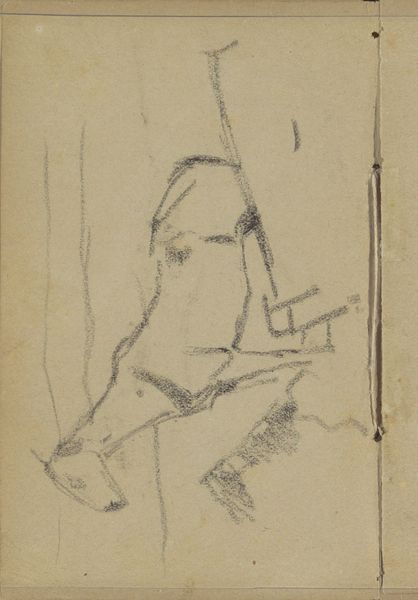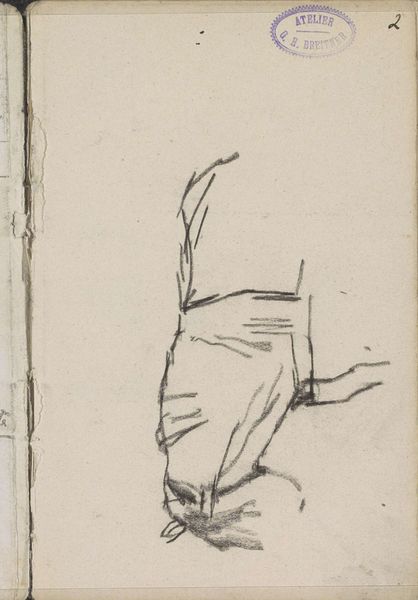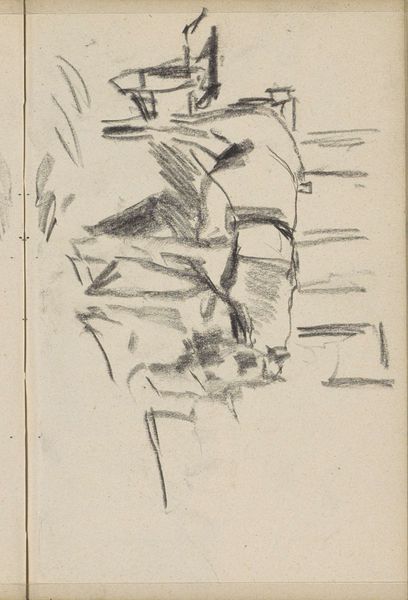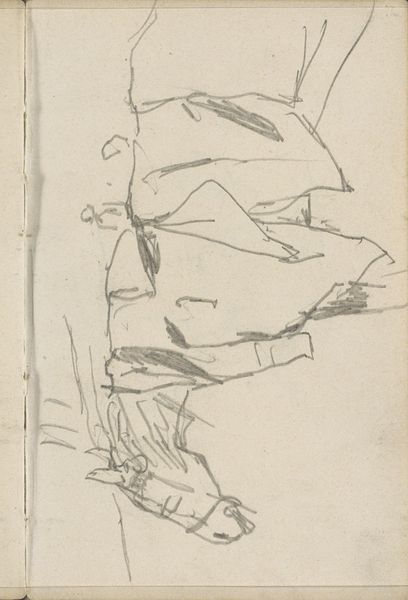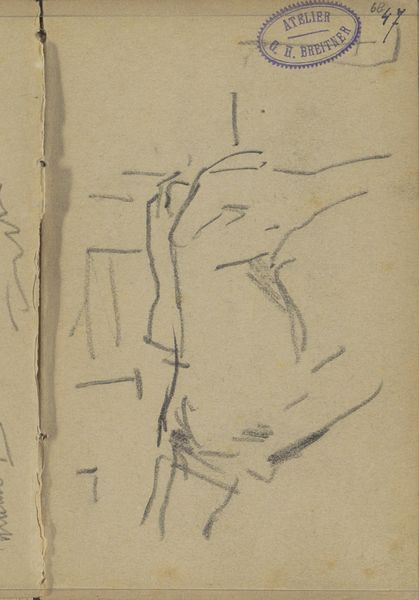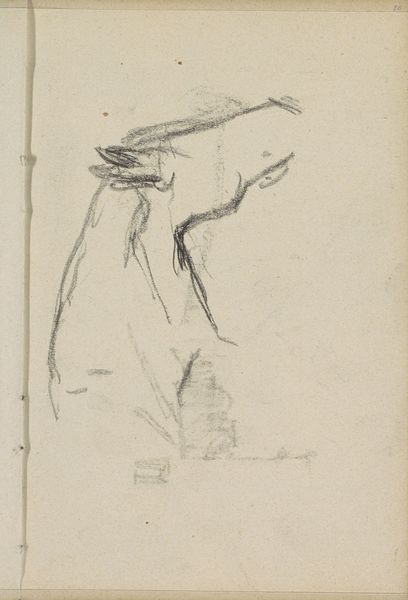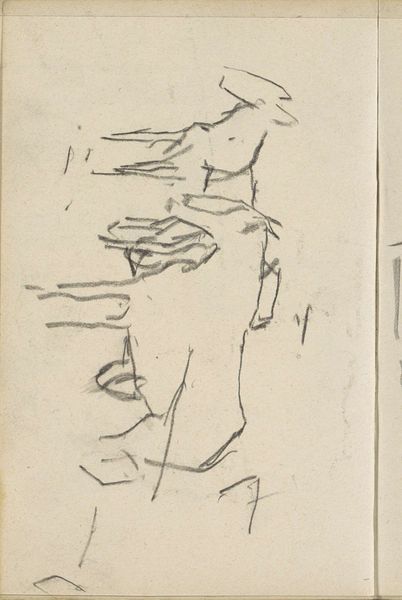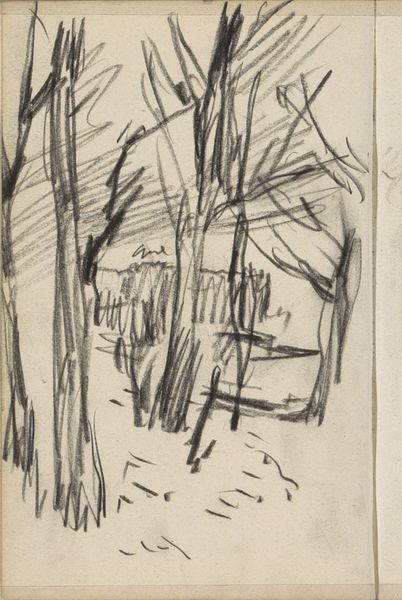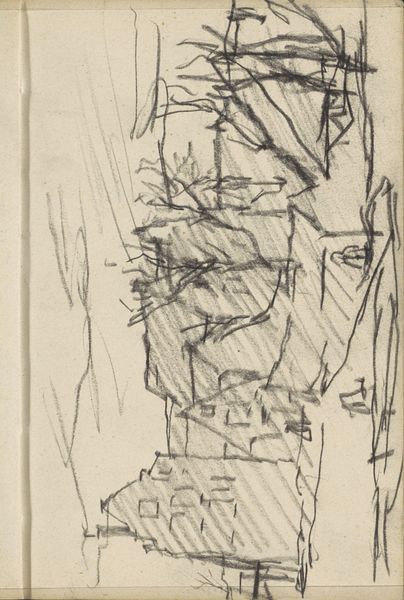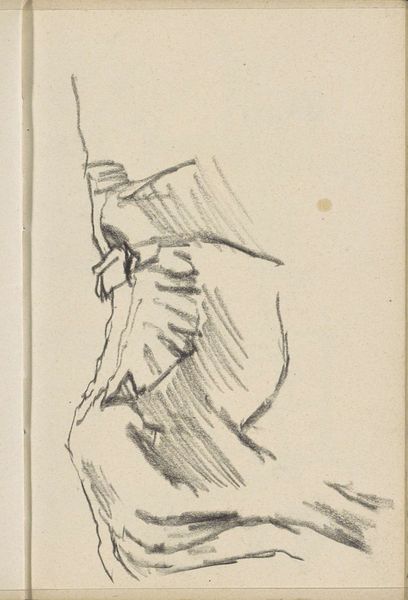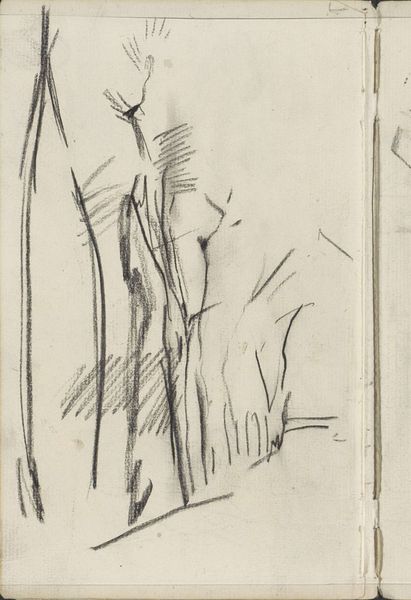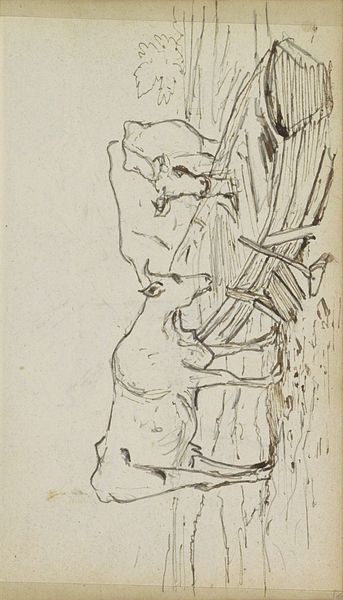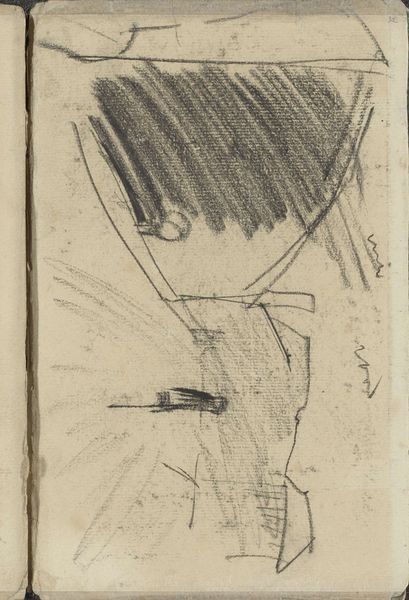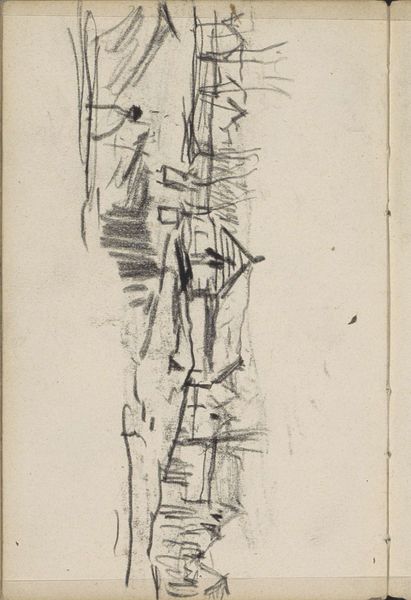
drawing, paper, pencil
#
drawing
#
landscape
#
paper
#
pencil
#
horse
#
realism
Copyright: Rijks Museum: Open Domain
Editor: Here we have George Hendrik Breitner's "Drawn Horse," created between 1912 and 1919, using pencil on paper. It's a pretty raw sketch, all quick strokes and suggestive lines, almost like a study. What do you make of it? Curator: Immediately, I am drawn to the structural economy achieved by Breitner here. Observe the layering of the pencil strokes: how they define form without adhering to rigid outlines. This evokes a sense of movement. Editor: It's interesting how the forms kind of emerge rather than being sharply defined, especially when you focus on the head of the horse. Curator: Precisely. Consider how Breitner’s realism isn't about replicating the superficial appearance but about capturing the inherent dynamics. Notice how the composition forces you to analyze each deliberate mark and their relation within a contained space. What visual cues guide your reading of depth? Editor: I guess the overlapping lines on the lower half imply a front and back, suggesting some sort of 3D. But why is so much space left open? Curator: That absence of fill directs the gaze—note how that sparsity contributes to the dynamism. One could view those implied and absent forms as equally valid, both contributing toward establishing this… what would you say, an experiential scene? Editor: So, the sketchiness adds to the feeling of movement and being present in the moment. I'm understanding now that it is less about accurately drawing a horse and more about evoking one through carefully constructed marks. Curator: Indeed. Through these means, the aesthetic function moves beyond mere representation; it activates a dynamic interplay between perception and reality. It’s more than just seeing; it's interpreting. Editor: That makes so much sense. Thanks, I learned a lot!
Comments
No comments
Be the first to comment and join the conversation on the ultimate creative platform.
